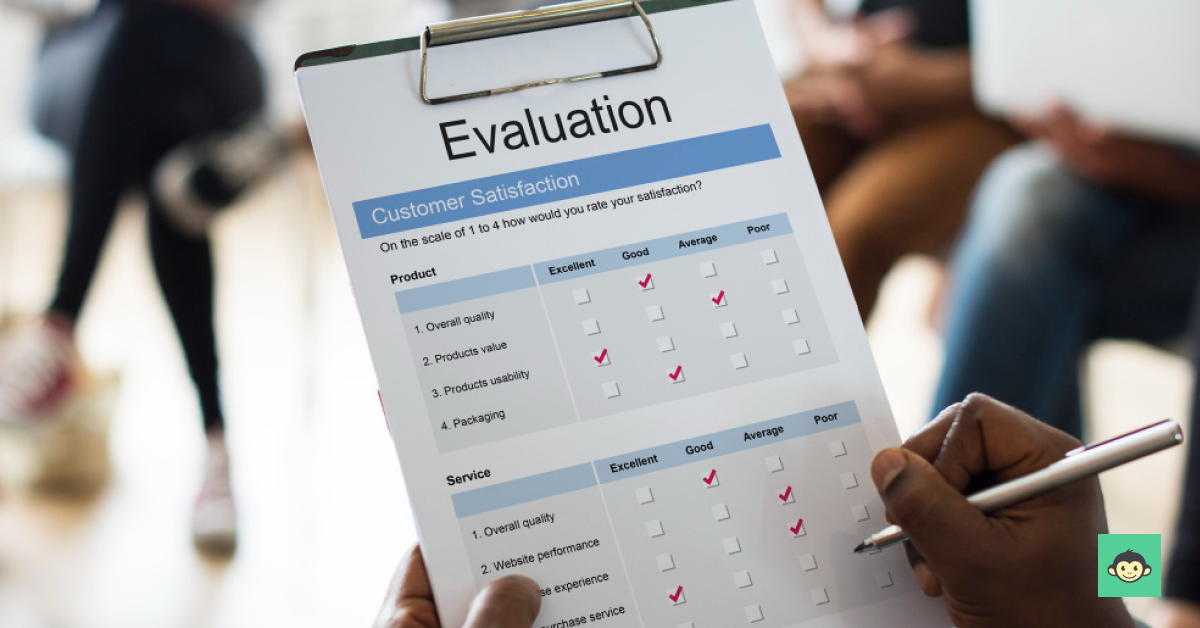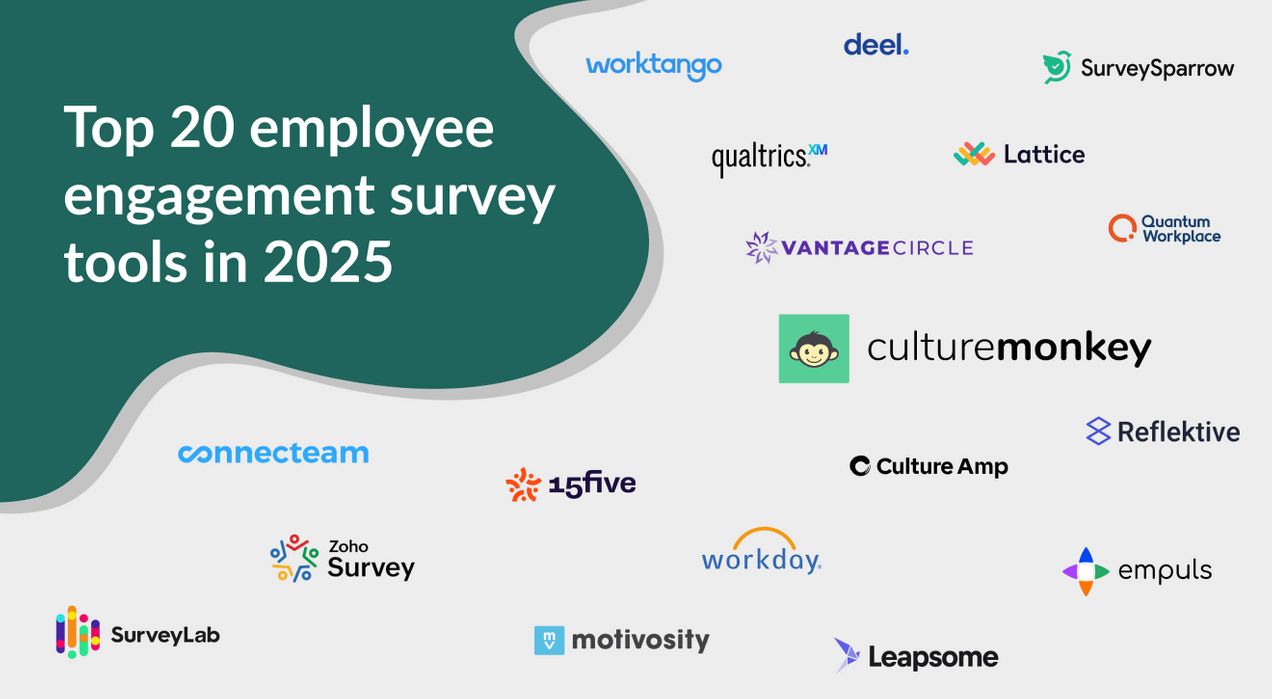How to make the best out of your employee engagement survey results?

Let’s imagine you’ve just completed your org-wide employee engagement survey and you’re just wondering, how to make the best use of my employee engagement survey results..
Well, you’ve landed at the right spot ;)
Employee engagement surveys are a valuable tool for gaining insights into your workforce and improving employee satisfaction. But what's the point of collecting all that data if you don't know how to utilize it effectively?
In this post, we'll guide you through the process of analyzing and leveraging your survey results to drive positive change within your organization. We'll share practical tips, real-life examples, and expert advice on interpreting the data, identifying critical areas for improvement, and implementing targeted strategies.
Maya Angelou once said, “Do your best until you know better. Then when you know better, do better.”
Let's learn how to maximize your survey results and create a work environment where employees feel heard, valued, and motivated. Together, we can unlock your organization's potential and take engagement insights to new heights!
Table of contents:-
- What is the goal of employee engagement survey analysis?
- How do you measure the success of employee engagement surveys?
- What are the common challenges of analyzing employee surveys?
- What are the results of employee engagement?
- How do you analyze employee engagement results the right way?
- Best practices for responding to employee engagement survey results
- How to arrive at a relevant employee engagement action plan based on your engagement results?
- How to correctly communicate employee engagement results to the employees and stakeholders?
- FAQs
What is the goal of employee engagement survey analysis?

These engagement survey analyses aim to gain meaningful insights from the collected data to drive positive change within the organization. By analyzing survey results, you can:
Understand employee perspectives
Employee engagement surveys provide an opportunity to understand how your employees perceive various aspects of their work environment. Analyzing the data helps you uncover their thoughts, opinions, and experiences, giving you a deeper understanding of what drives engagement and what areas may need improvement.
Identify strengths and areas for improvement
By carefully examining survey responses, you can identify areas where your organization is excelling and leverage those strengths. Additionally, you can pinpoint specific areas that may be causing disengagement or dissatisfaction among employees. This allows you to focus your efforts on addressing those areas and implementing targeted solutions.
Informed decision-making
Survey analysis provides valuable data to inform decision-making processes within the organization. By understanding the employee feedback and sentiments of your employees, you can make informed choices about policies, programs, and initiatives that will positively impact employee engagement and overall organizational performance.
Measure progress over time
Regularly analyzing survey results allows you to track progress and measure the effectiveness of your engagement initiatives. Ensuring that the organization takes effort to measure employee engagement, comparing data from different survey cycles, helps assess whether their efforts are making a difference and identify trends or patterns that may require further attention.
Foster continuous improvement
The ultimate goal of survey analysis is to drive continuous improvement in employee engagement. By using the insights gained from data, you can implement targeted strategies, monitor their impact, and iterate based on the feedback received.
This ongoing analysis, action, and refinement cycle helps create a work culture that continuously evolves and prioritizes employee satisfaction and engagement.
Remember, analyzing employee engagement survey results is not just about collecting data; it's about using that data to fuel positive change within your organization.
By understanding the goals of analysis and taking actionable steps based on the insights gained, you can create an environment where employees thrive and contribute to the success of the organization.
How do you measure the success of employee engagement surveys?

Measuring the success of employee engagement surveys involves evaluating various factors to determine the impact and effectiveness of the survey and subsequent actions taken. Here are key aspects to consider when measuring the success of employee engagement surveys:
Participation rate
The survey participation rate indicates the level of employee engagement with the survey itself. A higher participation rate generally suggests that employees are willing to share their feedback and are vested in the survey process.
Actionable insights
Success can be measured by the quality and usefulness of the insights gained from the survey. Are the employee survey results providing valuable information about employee perceptions, satisfaction, and engagement levels? Are these insights actionable and helping inform decision-making and improvement efforts?
Improvement in engagement metrics
Assess if the survey results lead to positive changes in engagement metrics. Are you observing improvements in areas highlighted as concerns or opportunities for growth? Monitor metrics such as employee satisfaction, retention rates, productivity, and collaboration to gauge the impact of engagement initiatives.
Employee feedback
Seek employee feedback regarding the survey process and its impact on their work experience. Are employees expressing satisfaction with the survey process, feeling heard, and seeing tangible outcomes from their participation?
Gathering employee feedback helps evaluate the perceived success of the survey in fostering a culture of open communication and driving positive change.
Comparison to baseline and industry benchmarks
Compare current survey results to previous survey cycles or establish industry benchmarks to assess progress. Have there been improvements in key areas of focus? Are engagement levels aligning with or surpassing industry standards? These comparisons provide valuable context for measuring success.
Organizational performance
Evaluate the impact of employee engagement efforts on overall organizational performance. Are there correlations between improved engagement levels and positive business outcomes, such as increased productivity, customer satisfaction, or financial performance? Assessing these connections can indicate the success of engagement initiatives in driving organizational success.
Remember, measuring the success of employee engagement surveys is an ongoing process. It requires tracking and analyzing multiple data points, multiple employee surveys, seeking employee feedback, and monitoring initiatives' impact over time.
By evaluating these factors, you can gain valuable insights into the effectiveness of your survey efforts and continuously refine your approach to enhance employee engagement and organizational performance.
What are the common challenges of analyzing employee surveys?

Analyzing employee surveys can present several challenges that organizations need to navigate effectively. Here are some common challenges faced when analyzing employee surveys:
Data overload
Employee surveys generate a vast amount of data, making it challenging to manage and analyze effectively. Sorting through the data and extracting meaningful insights can be time-consuming and overwhelming, especially without proper tools or expertise.
Data quality
Ensuring the quality and accuracy of data is crucial for meaningful analysis. Poorly worded survey questions, biased responses, or incomplete data can skew the results and hinder the analysis process. It's important to design surveys carefully and encourage honest and thoughtful responses from employees.
Data interpretation
Interpreting engagement survey data correctly is vital for deriving actionable insights. Misinterpretation or drawing incorrect conclusions can lead to ineffective strategies or misguided decision-making. It requires a thorough understanding of statistical analysis techniques and the ability to contextualize the findings within the organizational context.
Identifying key insights
With an abundance of data, identifying the most critical insights can be challenging. It requires a keen eye to identify patterns, trends, and areas of concern that require attention. Prioritizing key insights is crucial to focus efforts on the areas that will have the most significant impact on employee engagement.
Communication of findings
Presenting engagement survey findings and insights in a clear and meaningful way is essential for driving action within the organization. Communicating complex data in a manner that is easily understandable by stakeholders can be a challenge. It's important to package the information effectively, using visualizations, summaries, and actionable recommendations.
Action implementation
Analyzing survey data is only the first step. The real value lies in translating the insights into action. However, organizations may face challenges in effectively implementing changes based on the survey findings.
Resistance to change, lack of resources, or competing priorities can hinder the successful implementation of improvement initiatives.
Addressing these challenges requires a systematic approach, dedicated resources, and a commitment to using survey data to drive positive change.
What are the results of employee engagement?

When organizations prioritize employee engagement, they can reap a variety of positive results. Here are some of the outcomes you can expect:
Increased productivity
An employee engaged at work is motivated and committed to their work, which leads to higher levels of productivity. They go the extra mile, willingly take on new challenges, and actively seek ways to contribute to the organization's success.
Improved job satisfaction
When employees feel engaged, they experience higher levels of job satisfaction. They find meaning and fulfillment in their work, which leads to increased happiness and overall well-being. This positive outlook translates into higher retention rates and a more positive work environment.
Enhanced employee morale
Engaged employees are more likely to have a positive attitude, leading to a boost in overall employee morale. They feel connected to their colleagues and the organization, fostering a sense of camaraderie, teamwork, and mutual support.
Lower turnover
Engaged employees are less likely to seek opportunities elsewhere. They feel valued, recognized, and supported in their roles, reducing turnover rates and the associated costs of recruitment and training new hires.
Better customer service
Engaged employees tend to deliver exceptional customer service. Their enthusiasm and dedication translate into higher levels of customer satisfaction, leading to increased loyalty and positive word-of-mouth.
Increased innovation
Engaged employees are more likely to think creatively, contribute innovative ideas, and take calculated risks. They feel comfortable sharing their perspectives and are invested in the organization's success, leading to a culture of innovation and continuous improvement.
Stronger organizational culture
Employee engagement contributes to a positive and supportive organizational culture. It fosters open communication, trust, and collaboration, which are vital for building a cohesive and high-performing team.
Remember, employee engagement is a journey, and the results may vary based on organizational factors and the specific initiatives implemented. However, by prioritizing and nurturing employee engagement, organizations can unlock a range of positive outcomes that contribute to long-term success and a thriving work environment.
How do you analyze employee engagement results the right way?

Analyzing employee engagement results in the right way is crucial to derive meaningful insights and drive positive change within your organization. Here are some friendly tips to help you analyze employee engagement results effectively:
Dive into the data
Take a deep dive into the survey results and explore the responses. Look for patterns, trends, and outliers that can provide valuable insights into employee perceptions, satisfaction, and engagement levels.
Contextualize the findings
Consider the broader organizational context when interpreting the survey results. Take into account factors such as department, role, tenure, and other demographic variables that may influence employee engagement levels.
Compare and benchmark
Benchmark your results against industry standards or previous survey cycles to gain a better understanding of where your organization stands. Identifying areas of improvement and setting realistic goals based on comparative data can guide your action plan effectively.
Focus on key themes
Identify key themes and areas that require attention. Look for recurring issues or concerns expressed by employees. By prioritizing these themes, you can focus your efforts on addressing the most critical areas for improvement.
Qualitative insights
Don't overlook the qualitative feedback provided by employees. These insights can provide context, anecdotes, and deeper understanding of the survey results. Look for common sentiments, specific suggestions, and examples shared by employees.
Involve stakeholders
Engage key stakeholders, such as managers and team leaders, in the analysis process. Their perspectives and insights can help validate findings, provide additional context, and contribute to the development of action plans.
Actionable recommendations
Ensure that your analysis results in actionable recommendations. Translate the insights into a tangible employee engagement strategy, initiatives, and improvements that can address the identified areas of concern and positively impact employee engagement.
Communicate findings effectively
Present the analysis findings in a clear, concise, and engaging manner. Use visualizations, summaries, and storytelling techniques to effectively communicate the results to stakeholders and gain their support for future actions.
Remember, analyzing employee engagement results is not just about numbers and statistics. It's about understanding your employees' experiences, thoughts, and needs. By analyzing the results with empathy and a genuine desire to make a positive impact, you can uncover insights to guide your organization toward a more engaged and thriving workforce.
Best practices for responding to employee engagement survey results
Responding to employee engagement survey results is a crucial step in the process of improving employee satisfaction and driving positive change within your organization. Here are some best practices to consider when crafting your response strategy:
Acknowledge and appreciate
Start by expressing gratitude to your employees for their participation and honest feedback. Let them know that their voices are valued and that their input is essential in shaping the organization's future.
Share the results
Communicate the survey results openly and transparently with your employees. Provide a summary of the findings, highlighting both the positive aspects and areas that need improvement. This fosters a culture of open communication and demonstrates your commitment to addressing their concerns.
Address areas of concern
Prioritize addressing the areas that require improvement based on the survey results. Develop action plans and initiatives that specifically target these areas. Involve employees in the process by seeking their input and suggestions for improvement.
Communicate action steps
Clearly outline the actions that will be taken in response to the survey results. Provide a timeline, assign responsibilities, and set measurable goals for each initiative. This demonstrates your commitment to implementing meaningful changes based on employee feedback.
Employee involvement
Involve employees in the decision-making and implementation process. Encourage them to actively participate in shaping the initiatives and programs designed to address the identified areas of concern. This fosters a sense of ownership and engagement.
Regular progress updates
Keep employees informed about the progress of the initiatives and improvements. Provide regular updates on the steps taken, milestones achieved, and outcomes observed. This ensures transparency and keeps employees engaged in the process.
Celebrate successes
Recognize and celebrate the positive changes that result from the survey feedback. Highlight success stories and share examples of how employee input has made a difference. Celebrating successes reinforces the value of employee engagement and encourages continuous improvement.
Continuous feedback loop
Establish mechanisms for ongoing feedback and communication. Regularly solicit employee feedback to assess the initiatives' impact and identify any new challenges or areas for improvement. This creates a continuous feedback loop and ensures that employee engagement remains a priority.
By following these best practices, you can demonstrate your commitment to employee engagement and create a culture where employees feel heard, valued, and empowered to contribute to the success of the organization.
How to arrive at a relevant employee engagement action plan based on your engagement results?

Creating a relevant employee engagement action plan based on your engagement results is crucial for driving meaningful change within your organization. Here's how you can develop an effective action plan that directly addresses the insights gained from your engagement survey results:
Analyze the survey results
Take a deep dive into the survey results and identify key areas of concern, trends, and opportunities for improvement. Look for patterns in the data and prioritize the areas that require immediate attention.
Set clear objectives
Define specific objectives for your action plan. What do you want to achieve? Whether it's improving communication, enhancing professional development opportunities, or fostering a more inclusive work environment, clearly outline your goals to guide your actions.
Involve stakeholders
Engage key stakeholders, such as managers, team leaders, and employees, in the process. Their insights and perspectives are valuable in understanding the survey results and developing actionable strategies. Foster collaboration and ensure a sense of ownership among all stakeholders.
Develop actionable initiatives
Based on the survey results, design initiatives that directly address the identified areas of concern. These initiatives should be actionable, measurable, and aligned with your overall objectives. Consider both short-term and long-term strategies for sustainable improvement.
Assign responsibilities and establish timelines
Assign clear responsibilities for each initiative and establish realistic timelines for implementation. This ensures accountability and keeps the action plan on track. Regularly review progress and make adjustments as needed.
Prioritize communication and transparency
Communicate the action plan to all employees, sharing the objectives, initiatives, and expected outcomes. Be transparent about the process, timeline, and roles. Encourage open dialogue, address concerns, and emphasize the importance of collective efforts in achieving engagement goals.
Allocate resources
Ensure that you have the necessary resources, both financial and human, to support the action plan. Adequate resources will enable the successful implementation of initiatives and demonstrate your commitment to employee engagement.
Monitor and evaluate progress
Continuously monitor and evaluate the progress of your action plan. Use metrics and key performance indicators (KPIs) to measure the impact of initiatives and make data-driven adjustments as needed. Regularly solicit feedback from employees to gauge their experiences and the effectiveness of the implemented strategies.
Remember, an effective employee engagement action plan is not a one-time effort. It requires continuous assessment, refinement, and adaptation based on evolving needs and feedback.
How to correctly communicate employee engagement results to the employees and stakeholders?

Effectively communicating the employee engagement results to employees and stakeholders is crucial for transparency, trust-building, and driving positive change within your organization.
By following these best practices, you can ensure the communication process is clear, engaging, and fosters a sense of involvement and ownership among all stakeholders. Remember, open and transparent communication is key to maintaining a culture of continuous improvement and employee engagement.
Embarking on your organization's employee engagement journey can feel overwhelming, but with CultureMonkey, you have the perfect partner to unlock the full potential of your workplace culture.
Our comprehensive employee engagement platform provides a range of tools and features designed to measure, analyze, and improve employee engagement. We’ll provide you with accurate employee engagement survey results that let you convert survey insights into action plans in a swish.
Just schedule a free demo with CultureMonkey and stay on top of your workplace engagement game!
FAQs
How can I make the best out of my employee engagement survey results?
Start by analyzing the survey data to identify key insights and areas for improvement. Use the results to inform action plans and initiatives that address specific concerns and foster a positive work environment.
What should I do if I receive negative feedback on the survey results?
Embrace negative feedback as an opportunity for growth. Address the concerns raised by employees, communicate plans for improvement, and involve them in the process to show that their input is valued.
How can I ensure that the survey results lead to meaningful change?
Take a proactive approach by setting clear objectives and developing actionable strategies based on the survey results. Assign responsibilities, establish timelines, and regularly evaluate progress to ensure the implementation of meaningful changes.
Should I share the survey results with employees and stakeholders?
Absolutely! Transparently communicate the survey results to all relevant parties. Sharing the findings fosters trust, encourages open dialogue, and allows everyone to be part of the solution.
After analyzing the survey results, what steps can I take to sustain employee engagement?
Continuously monitor and evaluate progress, seek ongoing feedback, and adjust your initiatives as needed. Maintain open communication, celebrate successes, and regularly revisit the survey results to ensure long-term employee engagement and satisfaction.



